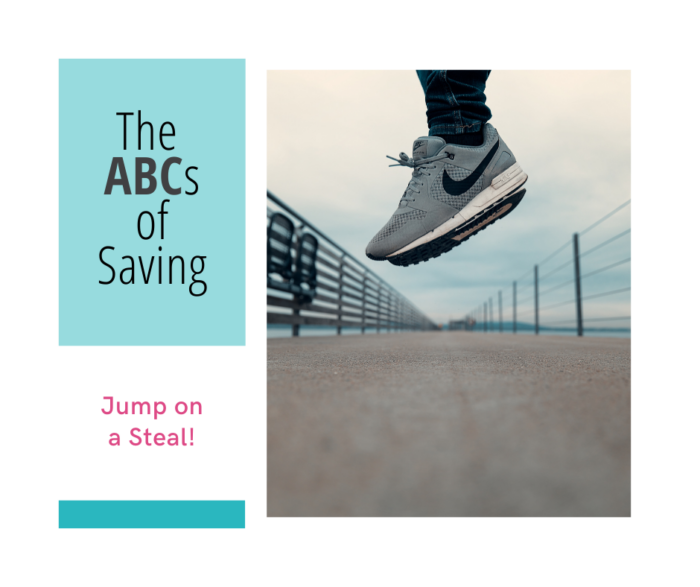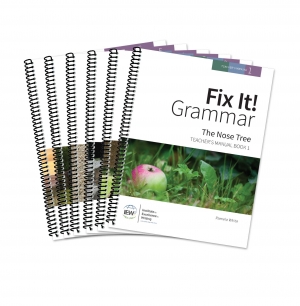
You may have been reading along in this series, the ABCs of Saving, and you may have noticed I talk a lot about patience. Patience, specifically when it comes to spending money, is important. We have talked about holding off and having a plan, about accepting the limits of your budget, about counting the cost before you make your purchases.
Thus, today’s post may seem a bit out-of-place; but hear me out.
There is a specific point in time and a specific price where a purchase just makes sense. That’s why you should jump on a steal when you see it.
This post may include affiliate links. If you click and make a purchase based on my recommendation, I get a small remuneration at no extra expense to you. I only recommend things I use and believe to be a blessing.
Patience is absolutely necessary to saving money. Preparation, on the other hand, is the key to making sure you don’t bust your budget. Even a really great deal can turn out to be a problem, if you aren’t prepared.
A Note About Planning Impulse Buys
I created this list to help you figure out when patience and preparation has turned into purchase. But I need to let you know something truly important.
We subscribe to a cash budgeting system. The envelope system is an important factor in being able to save money along the way. I have envelopes for each one of my kids, for our household and clothing, for our groceries, and for dining out.
If I do not spend all the money in a particular envelope each month, I leave it in the envelope for the next month. If expenses are tight, I can adjust the budget the next month for that particular category and still have a little bit of money left.
This procedure helps me to save up naturally for purchases.
Here are some tips for planning those impulse shops.
Make a wish list
Every once in a while, walk through your house and make a list of the items you would like to have if your budget allowed. Think of the:
- projects you would like to complete,
- accents you would like to add,
- items wearing out you would like to replace.
Jot these down in a home notebook and tuck the list away somewhere handy. When you are shopping and you see something that catches your eye at a great price, if it is on the list, jump on it!
The trick is to buy only things that you wanted anyway. Otherwise, we can find ourselves filling our homes with items that were a great deal, but don’t really fulfill a need or a desire.
Having a wish list ahead of time can help clear your head when the thrill of a deal is compelling you to buy. If it is not on the list, it may not really be a good purchase for your home.
Know what you are shopping for
Good research goes a long way to saving you money in your home. Knowing key shopping times, store margins, and price cycles will help you identify when a deal is a steal.
Are you shopping for a new electronic device? You might ask yourself some questions to determine the best time to buy:
- Would last year’s model do almost all the same things as this year’s model?
- How long would I have to wait for this year’s model to be at the same price as last year’s model?
- What incentives can I get for shopping elsewhere?
- Do I really need all the features of this model?
The higher price the item, the longer your research process should last.
Have a bottom line price
What are new curtains worth to you? How much is too much for a new mattress?
This is the highest amount you are willing to pay for an item.
Setting a limit beforehand of what you are willing to spend helps you keep your finances in check when the excitement of a deal strikes.
Make sure this limit is reasonable – you aren’t going to get a brand new car for $200- and firm. It can be very tempting to purchase something that is al-most at your target price, but really you should stick to your bottom line price and walk away from paying anything over it.
Set aside a little extra here and there
Even if you only set aside a little bit each week (say $5-10), you will have a little stash of cash for when the price is too good to resist. I save all the $5 bills that come into my hands. I do this with our regular cash system as well as my pocket-money.
Sometimes it can be difficult to stash away those fives, but we have been able to make large purchases with our little stashes (the list includes large household appliances and furniture). Recently, I purchased a laptop with the personal money I had been tucking away.
If you have a goal of purchasing an item that seems a bit out of reach even at a steal, tucking away small amounts of money when you can will rein it in. When you see that steal of a price, you will be able to tuck into a store of cash (and add it to money you have on hand, if necessary) to jump on it!
Have a little wiggle room
Build in room in your grocery budget or your household expenses budget for the great clearance finds or unadvertised specials you see when you are in the marketplace. Leaving a little margin in your budget will allow you to jump on the steals you see while you are out doing your regular shopping.
When you see tomatoes or toothpaste at a rock-bottom price, you can stock up without guilt because you have a little bit of room in your budget. Just don’t go too far! Only use up the wiggle room and only buy what you will actually use.
How do you react to a great deal at the store? Do you hold off or do you jump?














